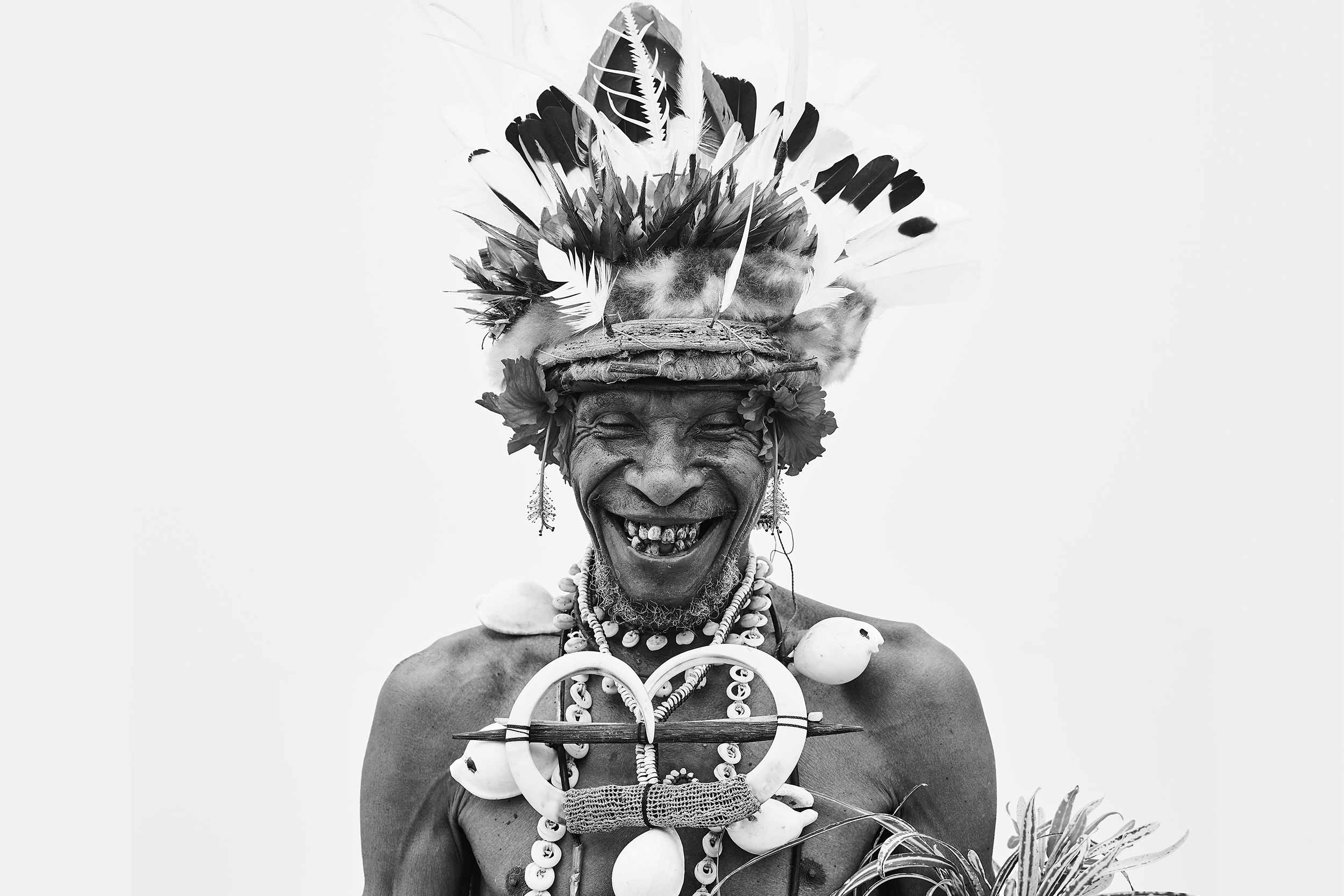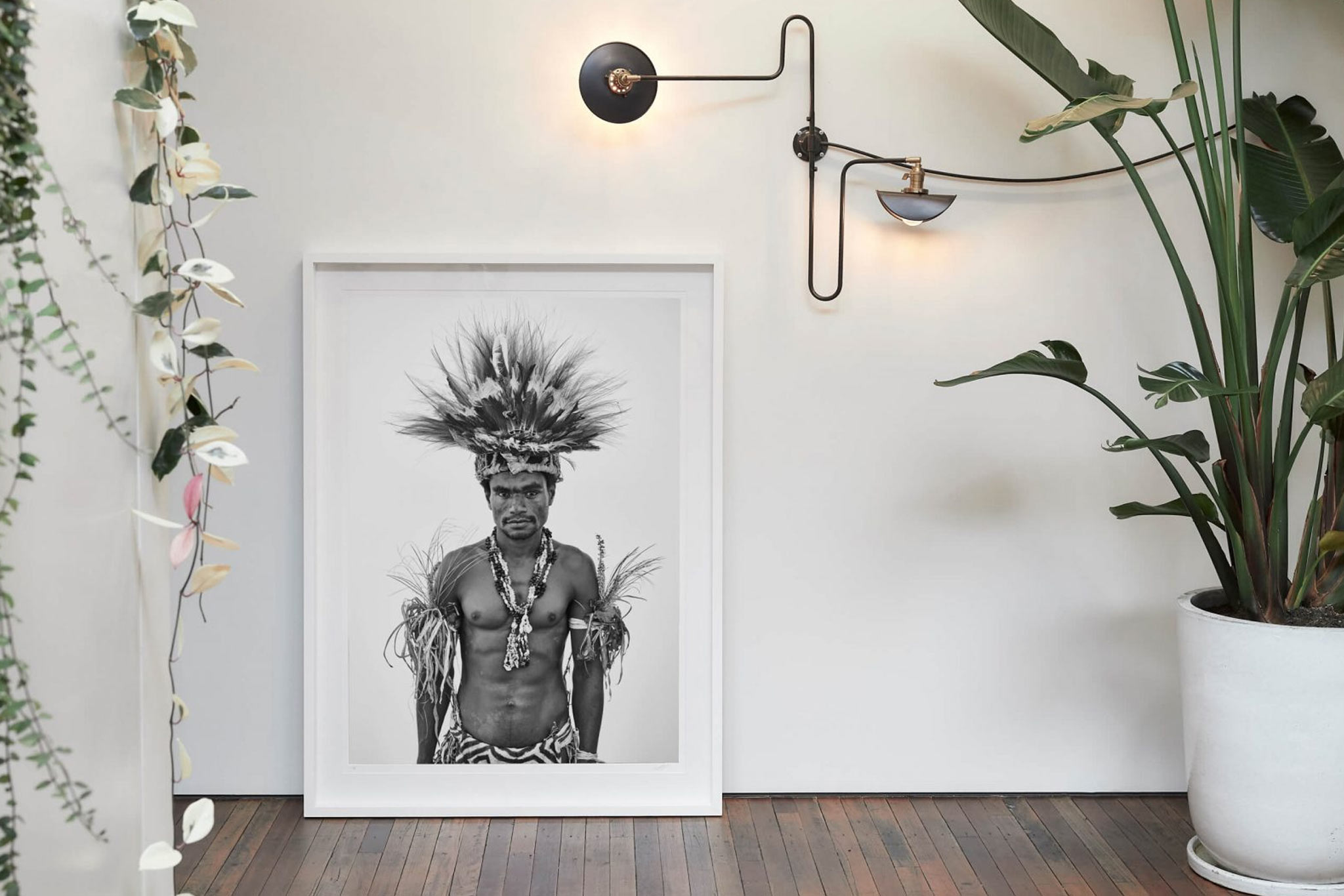

Village of Paradise
Through two generations' eyes
Details
Village of Paradise retraces a wartime photographer's journey through the remote villages of Oro Province, Papua New Guinea - 75 years after Flight Lieutenant Frederick James Thies first documented these communities in 1943. Inspired by his grandfather's remarkable portraits of PNG locals taken during World War II, photographer Sam Thies returned to the same villages to explore how life has changed - or endured - in these isolated communities. Through large-format photographic portraits captured with a portable studio carried from village to village, this project investigates the intersection of ancient culture and modernity. Each portrait tells an individual story while collectively revealing the dynamic tensions of contemporary PNG life. This is both a personal pilgrimage following family history and an anthropological study of cultural continuity in one of the world's most culturally diverse nations.
CATEGORIES
People
Place
Year
2018-19
As the captain announced our descent, I shifted my attention out the window and down to the ocean below. It was changing. From a deep blue to turquoise, and then, with the first signs of reef, clusters of lush green with rings of white and vivid aqua. We were crossing the Coral Sea. A body of water to the north of Australia. I could make out the coastal townships and as our plane flew us closer, I looked further up the rivers and deltas, across the farmlands and forests. Small villages dotted the landscape. A handful of smoke-stacks from settlements in the foothills reached into the sky. Eventually, my eyes anxiously fastened on the towering, jungle highlands of Papua New Guinea.
To me, this was the last frontier and at its closest border, sits only 150km north of the Australian coast. A place where time has shaped life unlike anywhere else. A land that is so close, yet so exotically distant. Centuries of tradition and evolution have combined to create a living museum. But at this stage something I had only read in books or seen in photographs and film. I try not to hold too many expectations when traveling to new places, so when preconceived visions started flooding in I shifted my thoughts and imagined what my grandfather may have felt on a similar flight path 75 years earlier. Like many men of his generation, going to war wasn’t about patriotism or heroics, it was simply for the adventure. To escape ordinary life and set out with your mates to experience new cultures and see new lands. For the first few weeks of his campaign, as he and his squadron established their camp around a makeshift airstrip in Port Moresby, it was just that.
Fred Thies tried to join the Royal Australian Air Force (RAAF) in the late 1930s, well before the war broke out in the Pacific. At this time, Australia, and the world were labouring through the Great Depression. Everyday life was tough and mundane. To his anguish, he was turned down on his first attempt, on the basis that he was too short. However, his mind was already made up. He wanted to experience the greater world and joining the armed forces was his only ticket. He bravely decided to have his body physically stretched to meet the minimum height required for service. The procedure didn’t give him the mandatory measurements outlined by the Air force and so his window to see the world was closing. It wasn’t until war broke out in the Pacific a couple of years later that his luck suddenly changed. Japanese troops were quickly securing new territories in the region and moving closer to Australian soil. Fred was successfully enlisted on September 22nd, 1941 and after six months of rigorous training, he was on his way to Papua New Guinea with the No. 6 Squadron.
He knew very well the lasting effects war can leave on the mind and body and was under no illusion the seriousness of what lay ahead. As a young boy, his father returned from World War I suffering debilitating shell shock and as a result, detached himself from his young family to live in isolation. This wasn’t enough to deter his thirst for adventure.
At the age of 90 Pa chose to share his stories of the war with me. During our talks, he handed me an old envelope labeled ‘Early RAAF’. The photos inside weren’t aerials of Japanese fleets or downed aircraft, they weren’t photos of mess halls, sleeping quarters or candid shots of off-duty officers. They weren’t bombing craters, fox holes or anything that resembled the fierce battle he lived through at this time. He certainly documented this too, however the ones he decided to give me were peaceful, skilfully framed images of the PNG locals and their villages. He was a keen photographer and had an eye for composition.
Over the first few weeks of his posting, in his spare time, he ventured from village to village capturing a series of portraits, armed with a Kodak Box Brownie and a willingness to learn more about his foreign neighbours. Tribesmen and women would emerge in traditional dress and perform sing sings, children would appear in more modern clothing fascinated by his camera. Young women would be harvesting crops or tending to the village pig. He observed their traditional way of life as being simple, but organised and harmonious. They had everything they needed and knew nothing of what they were missing. It was a grounding experience in his final days before heading into battle.
Years after his death in 2010 I revisited the old envelope and for some reason, the photographs were more important than ever before. Each small-format print came to life, each scene telling an ancient story. I wondered how much life had changed in these villages if at all. I wanted to find this out myself by exploring the intersection of an ancient culture in a modern world – the same quest he found himself on 75 ago.
Credits
Production Team
Director/Photographer: Sam Thies
DOP: Brendan Shambrook
Assistant/BTS Photographer: Cieran Murphy
Graphic Design
Stephanie Antill
Next Project







